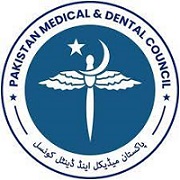COMPARISON OF FUNCTIONAL OUTCOME OF SURGICAL TREATMENT OF RECURRENT ANTERIOR SHOULDER DISLOCATION
Abstract
Abstract
Background
Shoulder joint is the most mobile joint of the body. Shoulder joint dislocation accounts for the 50% of all the dislocations. Its incidence is 2 % among general population. In most of the cases it is recurrent shoulder dislocation and in 97% cases of recurrent dislocation it is anterior dislocation. Mechanism for recurrent anterior dislocation is abduction, external rotation and extension. There is persistent inability of tissues to keep the humeral head in glenoid cavity. It may result from sudden injury to glenoid cavity (Bankart lesion), proximal humerus (Hillsachs lesion), repetitive micro trauma or and a result of generalized ligamentous laxity. Once the shoulder is dislocated it is vulnerable to repetitive episodes.
Objective:
To compare the functional outcome of two different treatment modalities (latarjet &Bristow procedure and Bankart Repair) in recurrent anterior shoulder dislocation
Subjects and methods
Study design: randomized clinical trial
Settings and duration: department of orthopaedic surgery services hospital Lahore from December 2017 to December 2018.
Sample collection: A total no of 40 patients with age 18-30 years both male and female having recurrent anterior dislocation of shoulder were included in the study. Patients with ligamentous laxity, psychological ailment and global instability were excluded from the study.
Data collection and analysis: Patients were divided in two groups having 20 patients in each group. Detailed history, clinical examination, radiographs, CT scan and MRI was completed to establish the diagnosis of recurrent anterior shoulder dislocation. We performed Bristow latarjet procedure in group a and Bankart repair in group B. All patients were followed at 1st , 2nd , 3rd , 4th,6th week and then at 4th , 6th and 9 months clinically and radiologically to assess the Instability and mobility by using Rowe score.
Results: there were 16 males and 4 females while in group B were 17 males and 3 females. Mean age in group A was 26.7 years (18-30) while in group B was 27 years (18-29) which was statistically insignificant (p>0.05). Right shoulder was involved in 13 (65%) patients in group A and 15 (75%) in group B. left shoulder was involved in 7 (35%) patients of Group A and 5 (25%) of group B. In group A 18 patients had excellent results, one patient was having grade I subluxation and one patient had positive apprehension test. In group B four patients had recurrence and three patients had subluxation of grade II.
Conclusion
Results of latarjet and Bristow procedure were excellent than Banckart repair. Patients satisfaction was also better in group A than group B.






